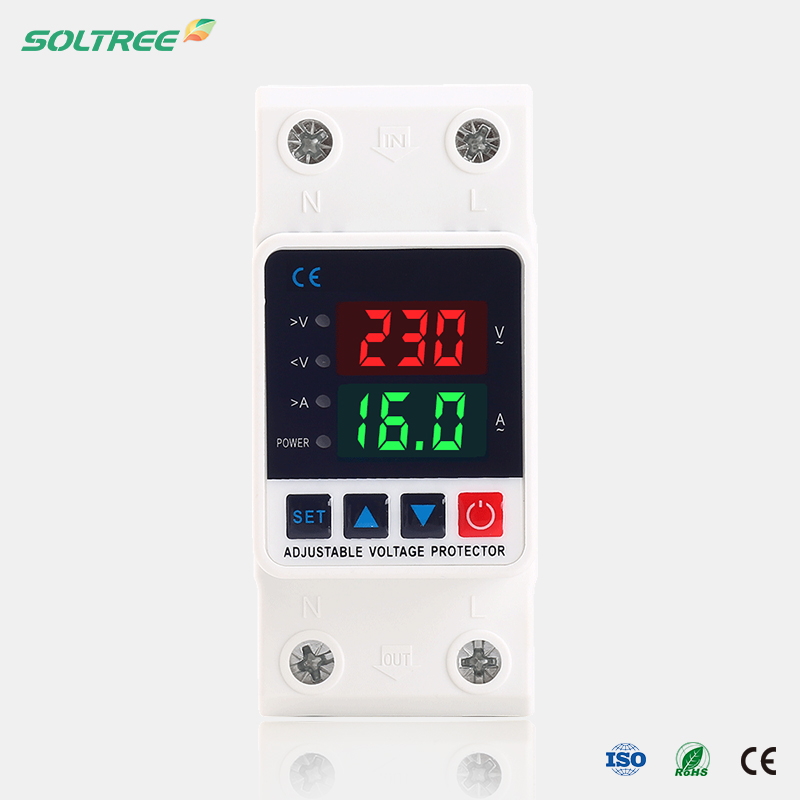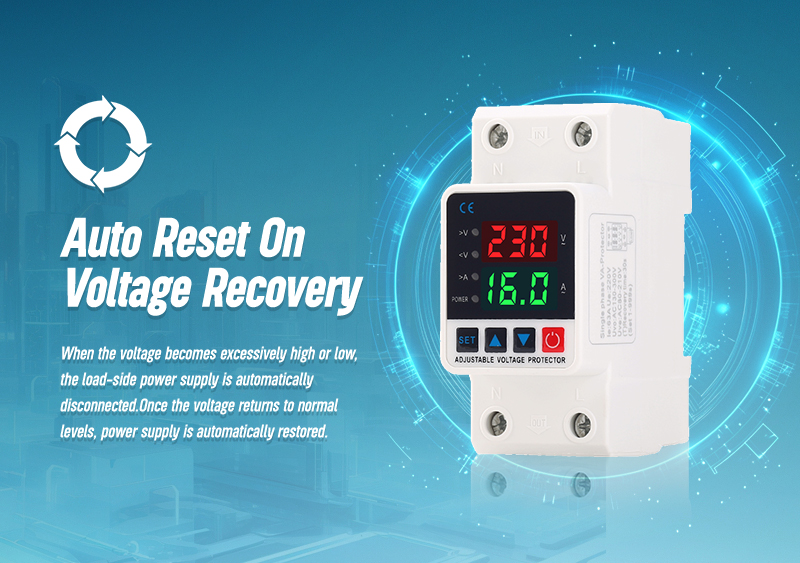A self-recovery voltage protector is much more than just a switch that turns on and off. It’s a smart sentry, a watchful guardian keeping an eye on the electrical system in your home. A regular switch needs someone to flip it, but this smart device can sense danger and act on its own.
This article will show you how the technology works inside the device. We’ll look at how its CPU, sensor circuits, and relay all work together to run a full cycle of fault detection and automatic recovery. Think of it as a “power grid bodyguard” for your home. It not only protects your appliances by cutting off electricity when danger strikes, but it also checks to see whether the coast is clear and gets them back to work.

The Brains and Brawn: Core Components Inside
There are three important parts that function together in every auto-reset protector: a brain to think, senses to see, and a muscle to move.
The Microprocessor (MCU): The Smart Brain
The MCU, or microprocessor, is the main control unit of the device. It’s a small, dedicated computer that only does one thing: it gets data, makes decisions, and gives orders.
Key Tasks of the MCU:
- It is always working on the real-time voltage data that the sensing circuit sends it.
- It checks this live voltage against the safe upper (overvoltage) and lower (undervoltage) limits that you set.
- When it finds a problem, it sends a “disconnect” signal to the relay right away.
- Once the voltage goes back to normal, it starts and controls the recovery delay timer, making sure the grid is stable before turning the power back on.
The Voltage Sensing Circuit: The Sharp Senses
This circuit is the protector’s way of sensing things. Its only job is to precisely and constantly measure the voltage on the incoming line. It works like a translator, changing the high-voltage AC electricity from the grid into a low-voltage DC signal that the microprocessor can read and understand securely. This makes sure that the brain obtains clean, accurate information to help it make important choices.
The Relay: The Powerful Muscle
The MCU is like the brain, and the relay is like the strong muscle or the mechanical gate. It is an electromagnetic switch that carries out the “open” and “close” orders from the microprocessor.
How the Relay Works:
- Normal State: The relay’s internal connections are closed, which lets electrical current flow freely through the device to your appliances.
- Fault State: The MCU delivers a little electrical signal to the relay’s electromagnet. This immediately turns on the internal switch, which makes the contacts snap open. This makes a physical air gap in the circuit, which stops the flow of electricity right away.
The Four-Step Protection Cycle: From Detection to Recovery

The protector works in a four-step loop that never ends, making sure that your appliances are always safe.
Step 1: Constant Monitoring (The Watchful Eye)
When the device is working normally, it is always watching and listening. The voltage sensing circuit is taking samples of the line voltage numerous times a second and sending this information to the microprocessor. The voltage you see on the device’s digital display is the result of this ongoing monitoring in real time.
Step 2: Fault Detection (The Instant Alarm)
The microprocessor quickly sees a “fault event” when the line voltage goes beyond your set overvoltage limit (for example, >275V) or below your undervoltage limit (for example, <165V). This happens when there is a change in the electrical grid.
Step 3: Disconnection (The Protective Action)
As soon as a fault is found, the MCU sends an electrical signal to the relay. The relay reacts in milliseconds, and its internal mechanical switch opens. This step cuts the circuit off, which stops the harmful voltage from getting to your appliances. The problem indication light on the gadget will usually come on at the same time.
Step 4: Self-Recovery (The Smart Reset)
This is the part of the device that works the best and is the most useful. The protection doesn’t just turn off.
- Continuous Verification: The sensor circuit and MCU keep working even after the power is turned off. They keep an eye on the voltage coming from the grid.
- Starting the Delay: The MCU doesn’t reconnect power right away after the line voltage goes back to the safe zone (within your set under and over voltage limits). Instead, it starts the countdown timer for the “recovery delay” that you set up (for example, 60 seconds).
- Final Restoration: The timer will only reach zero if the voltage stays stable within the safe range for the whole delay period. The MCU then sends a “close” signal to the relay, which closes the contacts and safely turns the power back on to your appliances. This delay makes sure that the grid is really steady and not merely going through a short adjustment.
Conclusion: More Than a Switch, It’s Automated Peace of Mind
It’s not just a switch; it’s peace of mind that happens automatically. When you learn how a self-recovery voltage protector works, you’ll see that it’s a simple but strong device made to protect your important equipment without you having to do anything.



